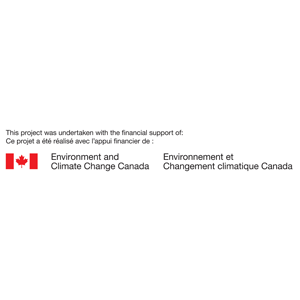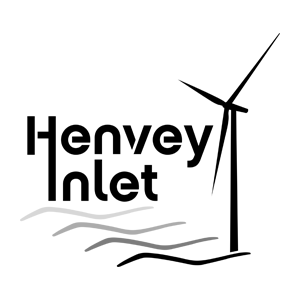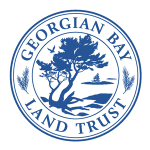Using fire as land management has been a practice for many Indigenous groups across the world. The Anishinaabe use fire (shkode) as a way of influencing the land and restoring ecosystems. Blueberries and other species thrive after fire burns competing vegetation and releases nutrients, creating better growing conditions and abundant harvests.
However, there has been a disconnection with using fire for land management due to the loss of knowledge through colonization. Anishinaabek became disconnected from fire practices through loss of knowledge and oral tradition due to assimilation. Colonization policies introduced by European settlers disrupted the transferal of knowledge between generations when children were taken from their parents and sent to residential schools. Children no longer learned their language, ceremony, or land management practices. Many laws were put into place to make traditional practices and ceremonies illegal for Indigenous groups.
It is important to understand the history behind the loss of traditional knowledge in order to understand why these practices no longer take place and why there is sometimes still so little information available to understand these practices.
In 1878, a Fire Act was put into place largely to protect valuable timber resources. Fire was viewed as a destructive force and jail time was introduced for people who caused or started fires (Davidson-Hunt, 2003). Fire rangers were also introduced to enforce the Act. It is likely that the Fire Tower on Tower Hill in Parry Sound was one of the stations used to patrol fires on Wasauksing First Nation. Despite the laws, Anishinabek were resilient and had low burning fires to help clear understory around blueberry bushes allowing blueberry plants to thrive.
Managing Climate Change Impacts
Since the Industrial Revolution, a societal shift marked by the colonization of both lands, and Indigenous and racialized peoples, increased carbon emissions. This has increased the average global temperature, causing climate change (Williams, 2018). The impacts include changes to regional weather patterns, including increased risk of forest fires. Indigenous peoples have long managed forest structures in ways that could promote or reduce the risk of fire, depending on their needs. Traditional knowledge has informed contemporary fire management practices to help avoid large-scale forest fires. Massive fires do not occur as often when fire is used on a more regular basis to clear understory, grass, and wood kindling that provides extra fuel. Forest management techniques once prevented such devastating forest fires, and pre-colonial climate conditions were much more moderate. In Australia, Indigenous groups are using fire to manage Savanna grasslands. Many areas are being monitored and studied to observe new growth and changes to ecosystems. They are now seeing new plant growth and higher plant biodiversity in areas that were cleared with fire; soil is also gaining more nutrients (Kohen, 2003).

Land Management Through Shkode
There are pockets of knowledge all over Turtle Island and beyond about fire and land management. A lot of the knowledge across Indigenous groups about fire has similar understandings of land management through fire. Internationally, Lewis (1993) notes that Indigenous people have over 70 uses of fire. Some of these specific uses include tree felling, clearing travel corridors, fireproofing settlements, and hunting. It is stated that “forests are in transition from conditions of Indigenous fire management to post-colonial fire suppression” (Kimmerer and Lake, 2001). This means that forest growth adapted to burnings that Indigenous people would control. During colonization those burnings stopped taking place causing forests to adapt once again to no burnings. Now with climate change, the forest is transitioning once again and has been suppressed by fire and overall care of land.
I had a conversation with an Elder and my uncle, John Rice, Zaagisige, about cultural burning practices in the Georgian Bay Biosphere area. He said that burnings would take place along the undercut of the forest and along shorelands to help clear the forest and prevent forest fires that would occur due to accumulated dry brush. Using fire as land management through cultural burning is a part of caring for the earth. In my understanding of cultural burning, it is a way that Indigenous people can manage land or forest by starting controlled fires in areas to help with regrowth and rejuvenation of certain species. There are some plants that need fire to reproduce. Jack pines are an example of a species that needs fire for seed cones to open so they can reproduce and grow. This is understood by Anishnaabek through Traditional Ecological Knowledge (TEK). Fire is looked at as a tool, not a weapon. Indigenous knowledge of fire should become more of a valued resource to forest managers.

Policymakers such as the First Nation Chief and council, elders, townships and municipalities, foresters, and scientists should be working to develop new management policies to restore forest health and plant biodiversity. However, there must be collaboration among these groups and their ways of governing. This can be hard to coordinate. However, this collaboration is in action in Alderville, Ontario. Alderville Black Oak Savanna is using ecological restoration work which combines using fire, planting native species, and controlling invasive species.
Roles in Community

Women are given the role of water keepers in Anishinaabe traditions. Men are given the role as fire keepers. Two spirit people have many roles in society and ceremony. However, many of these teachings and sense of role have been lost and are now being relearnt and reclaimed. Some two spirit people can also be fire keepers, water carriers, carry eagle feathers and conduct ceremonies. Identifying as two spirited I am still learning about navigating ceremony and my place within certain spaces. These teachings and two spirit youth have important roles in reclaiming land management and leadership practices.
Fire keepers would monitor the age and health of forested areas and ecosystems. This is through observing abundance of harvest plants, animals, biodiversity and organizing times to burn. Burning times would happen during the fall and spring when the ground is usually more wet. Wind direction also contributes to burning times and aids in controlling the direction fire moves through an area. However, through loss of knowledge there is a disconnect of roles amongst communities. Fire within the community even socially, creates safe spaces and connection to land, sky and water.
Sources and Further Reading
- Alderville Black Oak Savanna. (2019). What we do. Retrieved from: http://aldervillesavanna.ca/index.php/what-we-do/
- Blackman, T.J. (2015). The ecological benefits of forest fires. Retrieved from: https://learn.eartheasy.com/articles/the-ecological-benefits-of-forest-fires/#:~:text=Fires%20are%20a%20great%20way,for%20a%20more%20fertile%20area.
- Davidson-Hunt, I.J. (2003). Indigenous lands management, cultural landscapes and Anishinaabe people of Shoal Lake, Northwestern Ontario, Canada. Environments, 31(1), 21-42.
- Government of Canada. (2019). Fire regime. Retrieved from: https://www.nrcan.gc.ca/climate-change/impacts-adaptations/climate-change-impacts-forests/fire-regime/17780
- Kimmerer, R.W., & Lake, F.K. (2001). The role of Indigenous burning in land management. Journal of Forestry, 99(11), 36-41. https://doi.org/10.1093/jof/99.11.36
- Kohen, J.L. (2003). Knowing country: Indigenous Australians and the land. In H. Selin (Ed.), Nature across cultures – views of nature and the environment in non-Western cultures (pp. 231-235). Techniset, Denton, Manchester: Kluwer Academic Publishers.
- Lewis, H.T. (1993). Patterns of Indian burning in California: ecology and ethnohistory. In T.C. Blackburn, & K. Anderson (Eds.), Before the wilderness: Native Californians as environmental managers, (pp. 55-116). Menlo Park, CA: Ballena Press.
- Maher, S. (2019). Climate change is making wildfires in Canada bigger, hotter and more dangerous. Retrieved from: https://www.macleans.ca/news/canada/climate-change-is-making-wildfires-in-canada-hotter-and-more-dangerous/
- Williams, L. (2018). Climate Change, colonialism, and women’s well-being in Canada: what is to be done? Canadian Journal of Public Health, 109, 268-271. https://doi.org/10.17269/s41997-018-0031-z

Gracie Crafts is the Indigenous Education Intern for the summer with the Georgian Bay Biosphere and the Georgian Bay Anishinaabek Youth. Her Anishinaabe name is Niizhogiiziskwe, meaning “two suns women”. She is an Anishinaabekwe from Wasauksing First Nation, of the Martin clan. She is also Jewish and of mixed European descent. She identifies as Two-Spirit and is a Fire Keeper at Trent University where she is studying Indigenous Environmental Science (B.Sc).




























